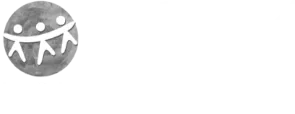In today’s digital age, innovation has become an integral part of every aspect of our lives, including education. With the rapid advancements in technology, students now have access to a wide range of tools that aid their learning journey. These tools have revolutionized the way education is imparted and have made learning more engaging, interactive, and effective. In this article, we will explore how embracing innovation in education through the use of advanced tools can greatly benefit students.
Personalized Learning for Individual Needs
Every student has unique learning needs and preferences, and advanced tools can cater to those individual requirements. This personalized approach ensures that students receive the support and guidance necessary to excel in their studies, regardless of their strengths and weaknesses.
For example, there are tools that provide personalized feedback and recommendations based on a student’s performance and learning style. This personalized approach ensures that students receive the support and guidance they need to excel in their studies.
Collaboration and Communication Beyond Boundaries
Innovative tools can enhance collaboration and communication among students and teachers. They facilitate seamless collaboration and communication among students and educators, irrespective of geographical limitations. Students can connect with peers from across the globe, engaging in collaborative projects, sharing diverse perspectives, and fostering a sense of global citizenship. Additionally, educators can provide real-time feedback and support, creating a dynamic and interactive learning environment that extends beyond physical classroom walls. With the rise of online learning platforms and communication tools, students can now connect with their peers and instructors from anywhere in the world. This opens up a world of opportunities for collaborative learning, where students can work together on projects, share ideas, and learn from each other’s perspectives. Additionally, teachers can provide instant feedback and support to students, fostering a more dynamic and interactive learning environment.
Embracing a Culture of Innovation:
Integrating these tools into the educational landscape requires a commitment to ongoing exploration and adaptation. Educators should embrace a growth mindset, continuously seeking new and innovative ways to enhance the learning experience. By fostering a culture of innovation, we empower students to become active participants in their education, preparing them for a future where adaptability and lifelong learning are essential.
Preparing Students for the Future:
Embracing innovation in education is not simply about adopting the latest gadgets; it’s about preparing students for the demands of a rapidly changing world. The skills cultivated through interactive learning, collaboration, and problem-solving are essential for success in the 21st century. By equipping students with these tools and fostering their digital literacy, we empower them to become lifelong learners, adaptable thinkers, and active contributors to society.
Engaging Tools for Interactive Learning:
Several innovative tools epitomize the shift towards interactive and collaborative learning experiences:
- Flipgrid: Flipgrid is an interactive video discussion platform designed for educators. It allows teachers to create “grids” to facilitate video-based discussions. Within each grid, teachers can pose questions or topics, and students respond with short video clips. This format encourages participation and engagement, as it provides students with a more dynamic way to express themselves compared to traditional written responses. Flipgrid also features tools for educators to moderate discussions, provide feedback, and assess student responses. It’s widely used in classrooms to foster communication, collaboration, and reflection among students.
- Otter.ai: Otter.ai is an AI-powered transcription and note-taking platform. It uses advanced speech recognition technology to transcribe spoken words into written text in real-time. Users can record meetings, lectures, interviews, or any other spoken content, and Otter.ai will generate accurate transcripts automatically. Beyond transcription, Otter.ai offers features like speaker identification, keyword highlighting, and the ability to search within transcripts. It’s particularly useful for students, professionals, and researchers who need to capture and organize spoken information efficiently. Otter.ai can save time and enhance productivity by providing searchable, editable, and shareable transcripts of spoken content.
- Draw.io: Draw.io is a web-based diagramming tool used for creating various types of diagrams and flowcharts. It offers a wide range of shapes, icons, and templates that users can drag and drop onto a canvas to create their diagrams. Draw.io supports collaboration, allowing multiple users to work on the same diagram simultaneously in real-time. It also integrates with cloud storage services like Google Drive, OneDrive, and Dropbox, enabling users to save and share their diagrams effortlessly. Draw.io is popular among students, educators, engineers, designers, and business professionals for visualizing concepts, processes, systems, and workflows in a clear and structured manner.
- Kahoot!: Kahoot is a game-based learning platform that makes learning fun and interactive. It allows educators to create quizzes, surveys, and discussions, which are then presented to students as multiplayer games. Participants answer questions using their smartphones, tablets, or computers, and they earn points based on both accuracy and speed. Kahoot’s competitive format encourages engagement and active participation, as students compete individually or in teams to climb the leaderboard. Additionally, Kahoot offers a vast library of pre-made games on various subjects, making it easy for educators to find and use content aligned with their curriculum. Kahoot can be used in classrooms, virtual learning environments, corporate training sessions, and social events to reinforce learning objectives and assess knowledge retention in a fun and engaging way.
Conclusion
Innovation is the driving force behind the transformation of education, and embracing innovative tools is key to unlocking its full potential. The integration of innovative tools in education has sparked a paradigm shift, transforming the learning experience into an engaging, personalized, and collaborative journey. As we continue to embrace these advancements, we unlock the potential of every student, preparing them not just for academic success but for a future filled with possibilities. The future of education is bright, fueled by innovation and the unwavering commitment to empower the next generation of learners.
By leveraging tools like Flipgrid, Otter.ai,Draw.io and Kahoot!: educators can create dynamic learning environments that inspire curiosity, collaboration, and lifelong learning. As we continue to embrace innovation in education, let’s harness the power of technology to empower learners and shape the future of education.




